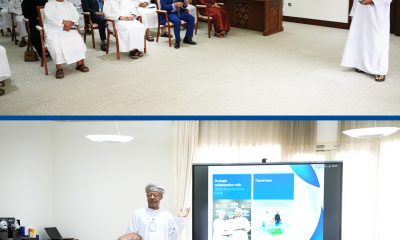News
Moody’s: Project finance remains resilient class of specialised corporate lending
Project finance bank loans continue to demonstrate default and recovery performance that are attractive to long-term lenders, according to Moody’s Investors Service in its latest annual study, “Default and Recovery Rates for Project Finance Bank Loans, 1983-2014.”

Project finance bank loans continue to demonstrate default and recovery performance that are attractive to long-term lenders, according to Moody’s Investors Service in its latest annual study, “Default and Recovery Rates for Project Finance Bank Loans, 1983-2014.”
“Our report shows that the 10-year cumulative default rate for project finance bank loans is consistent with 10-year cumulative default rates for corporate issuers of low investment-grade credit quality,” says Andrew Davison, a Moody’s Senior Vice President and author of the report. “Ultimate recovery rates for project finance bank loans average 80%. However, in almost two thirds of cases the most likely ultimate recovery rate was 100% meaning no economic loss,” added Mr Davison.
Moody’s report titled “Default and Recovery Rates for Project Finance Bank Loans, 1983-2014” is now available on www.moodys.com. Moody’s subscribers can access this report via the link provided at the end of this press release.
“Our latest study expands and updates the body of Moody’s research which has informed market debate on the credit risk of project finance, including the treatment of infrastructure project finance under Solvency II,” says Mr Davison.
The report shows that project finance is a robust class of specialised corporate lending, even though project finance borrowers are highly leveraged, thinly capitalised special purpose vehicles with limited financial flexibility.
The Study shows that marginal annual default rates improve significantly over time from financial close. This seasoning characteristic differentiates the behaviour of project finance bank loans from corporate bank loans. Marginal annual default rates, a measure of the likelihood that a performing obligor at the start of a year will default in that year, are initially consistent with marginal default rates exhibited by high speculative-grade credits. However, on average, they trend towards marginal default rates consistent with Single A category corporate ratings by year six from financial close.
Ultimate recovery rates for project finance loans appear to be substantially uncorrelated with certain factors which are key determinants of ultimate recovery rates for general corporate debt facilities — in particular, the legal jurisdiction of the defaulted company and default rates.
The report – an updated and expanded version of Moody’s previous study published in March 2015 – takes a comprehensive look at the performance of project finance loan transactions over a 32-year period. The study now covers 5,880 project finance transactions originated globally during the period 1983 to 2014, an increase of 11% in the size of the study data set.
-

 Alamaliktistaad Magazines2 months ago
Alamaliktistaad Magazines2 months agoAlam Al Iktisaad – September 2025 Edition
-

 Magazines2 months ago
Magazines2 months agoOER – September 2025 Issue
-

 News2 months ago
News2 months agoKitchenomiKs Secures Investment of US$3.2M Led by Jasoor Ventures
-

 News2 months ago
News2 months agoOman Inaugurates ‘Hadatha’ – Its All-New Cybersecurity Center
-

 Banking & Finance2 months ago
Banking & Finance2 months agoOman Arab Bank Highlights Its Ongoing Strategic Initiatives and Future Plans
-

 News2 months ago
News2 months agoIEA Expects Global Oil Market to Remain Oversupplied in 2026
-

 Energy2 months ago
Energy2 months agoWLGA Middle East LPG Summit & Expo 2025 to be held at OCEC on November 10 and 11
-

 Real Estate2 months ago
Real Estate2 months agoAl Mouj Muscat Unveils Azura Beach Residences Phase 2: A New Chapter in Waterfront Living































You must be logged in to post a comment Login